Technology and Society: The Changing Landscape
Technology and Society: Introduction
In the halcyon days of technology development, just a few decades ago, advances were greeted with enthusiasm. Everyone expected a better life from new devices: computers, microwaves, and nuclear power, to mention a few. Environmental concerns, global warming, worker displacement, Intellectual Property Rights (IPR), energy conservation, and globalization were not on the radar. Today, in contrast, CEOs, executives, public relations personnel, managers, and technical folks at all levels must deal with a bewildering array of such new issues, most of which were not part of their training. Technology and science now impact nearly all aspects of society, so decision makers need to recognize these impacts to carry out their duties and responsibilities more effectively. Here we look briefly at a few of these issues.
Climate change
Global Warming, aka “Climate Change,” is an example of an area that has assumed great importance for nearly all companies but at the same time has become a highly contentious issue, with political, economic, social, ecological, and scientific implications. The hapless decision-maker is bombarded with books and documentaries replete with apocalyptic images — likely to be familiar from Al Gore’s An Inconvenient Truth and Earth in the Balance as well as writings by James Hansen and other climate action activists — portraying a world overcome with famine, flooding, and destruction. Some reputable scientists doubt these conclusions and argue for a more nuanced position, while others denounce the whole global warming thing as a cruel hoax that itself condemns many to lives of deprivation and starvation. Unfortunately, such issues drive partisans to employ divisive rhetoric and obfuscating arguments, with the result that it can be difficult for an objective observer — who simply wants to understand the issues at stake — to make a reasoned judgment.
Figure 1. Climate Change and its Relation to Other Areas
The global warming/climate change controversy is not about the question of whether the earth’s climate is undergoing change, because we know from historical records and paleoclimatology research that the earth’s climate has always been changing. Rather, the controversy is about the effect of human activity on the earth’s climate, and in particular, whether human activity is causing the earth’s climate to warm significantly. By “significantly” here we mean enough to cause potentially serious, deleterious, and widespread changes to geography, flora, and fauna. This is known as “anthropogenic global warming” (AGW).
Policy questions are at the forefront of any discussion of climate change, since everyone would like to know what we should do (if anything). At this point in time there are several policy options available. The basic choices are: (1) minimal action, i.e., assuming that the temperature fluctuations we have seen are normal; and (2) instigating a mitigation program. Alternatives are summarized in Figure 2.
Figure 2. Policy Options for Climate Change Action
Stages of technology evolution
Technology purveyors need to understand how technology interacts with and influences society. New technologies do not change society instantly—societies are characterized by a high degree of inertia with respect to change—contrary to what technologists often assume. The ability to understand this change and thus how to deal with it, is an important skill. Technologically-induced changes occur in three steps:
1. Drop-in replacement: At first, the new technology is viewed through the eyes of those accustomed to the old. In this stage, it is not entirely trusted, but — when employed – it’s seen as a direct and usually more efficient replacement for older technology; and its name often reflects this status. The automobile was built to function as a better horse and buggy; hence the automobile’s first name: “horseless carriage.” Historically, this stage seems to endure for about one generation, the time required for a new generation to grow up and be comfortable with the new technology. It is in this stage that benefits from a new technology, though as yet minimal, are most readily apparent and most easily quantifiable. An example is replacement of the manual typewriter by the electric typewriter, which permitted secretaries to type 20-30% faster than before.
2. New applications stemming from scale change: The new invention typically can perform old jobs faster and better; for example, a motorized vehicle can carry heavy loads over longer distances than horse-drawn carriages. This permits new applications which, though considered desirable under the old technology, were not feasible or were only marginally feasible for either technical or economic reasons. In the case of the automobile, this was long-distance travel for families; for business, it meant the ability to transport and deliver perishable goods in refrigerated trucks, and all goods over much longer distances. In the case of military hardware, self-propelled guns (i.e., tanks), became feasible and first saw service in World War I. Mass production causes the price of the technology to fall, creating a positive feedback loop for applications, and the building of a support infrastructure; in the case of the automobile, it was networks of paved roads, service stations, motels, and related service industries, which began to be built in earnest after World War I. This stage appears to take one to two generations, which often overlap those of the first stage.
3. Reorganization of industry and society: In this stage, a second and third generation has grown up with the technology, and with few roots in the past, recognizes that whole new ways of living and doing business are now possible. In the case of the automobile, this led to the expansion of the suburbs, development of shopping malls, large factories which could draw on workers from long distances, and new industries (such as fast food) catering to an automobile-based society. Paul David of Stanford found in a recent study that U.S. industry took two decades to realize substantial benefits from electricity technology, something which occurred only after factories were restructured to take advantage of the enhanced capability and flexibility of electric motors compared to other forms of motive power.
The three steps are summarized in Figure 3.
Figure 3. The Three Stages of Technology-induced Societal Change
In the case of telecommunications, and in particular the marriage of telecommunications and information systems, the first stage appears to have occurred in the 70’s and 80’s. The rapid proliferation of Group 3 fax machines is a typical “drop-in” replacement phenomenon: the fax transmission replaces mail and courier delivery; similar remarks apply to cellular phones, which function like ordinary wireline phones, except for additional (mobile) capability. The second stage occurred in the 90’s, with falling telecommunications service and equipment prices triggering new applications and rebuilding of the telecommunications infrastructure to permit high-bandwidth data traffic, video-on-demand, and a host of other applications such as telecommuting and video-teleconferencing. The third stage came into full bloom in the early part of the 21st century. At that time, low-priced telecommunications services, and a vast “information highway” permitted business, education, and other aspects of life to be organized along lines quite different from those common today. Gone are much of the need for individuals to occupy offices in the same building; in many cases, teams of specialists from all over the world will be assembled to carry out projects. Such teams may be from different companies, which form “virtual corporations” which last for the duration of a particular project. The notion of lifetime employment by a single company may also dwindle, as individuals may come together in a similar way to market their skills. Learning will become a life-long technology-based activity for almost all workers, since the need for skills will change rapidly and constantly. Manufacturing and distribution will become more decentralized and more global, with world-wide 800-type telephone numbers for marketing and sales.
Intellectual Property Rights (IPR)
The digital revolution has brought the issue of copyright protection and intellectual property rights to the forefront. Historically technological barriers were the mainstay of copyright protection. To make a copy of a book, even with a Xerox machine, was very labor-intensive and costly per page—much cheaper just to buy the book. Vinyl records could not be copied easily, and analog tape copies were never as good as the original. But technological barriers are declining as a means to protect intellectual property, and this change is emerging as the greatest threat to intellectual property rights. In particular, the Internet and digital storage methods are radically lowering the technological barriers and consequently forcing changes in the way providers distribute content, especially entertainment.
Such a major change will require an equally radical shift in thinking about how to pay content producers and how to restructure the entire production and distribution network’s economics. The technological and legal barriers are only one part of a multipart solution, one in which all parts have a role in thwarting inappropriate use of intellectual property by encouraging and rewarding legitimate uses.
Today, efforts to protect intellectual property typically center on legal barriers and the creation of an appropriate legal infrastructure. The recently enacted Digital Millennium Copyright Act of 1998 is the latest in a long series of measures aimed at regulating commerce in intellectual property. To be sure, development of such a legal infrastructure is of the highest importance, and one that is equivalent in many respects to the development of our legal infrastructure for contracts. Working out the contracts infrastructure has taken centuries, and the courts are still modifying it. Hopefully, they will not need as much time for intellectual property rights.
As important as the legal infrastructure is, other aspects of IPRs are also extremely important. In particular, protection of intellectual property has always been a problem with very significant technological dimensions. To appreciate this fact, begin by understanding that the problem has two sides: protection against corporate or large-scale theft, and protection against individual or small-scale theft. Historically, the courts crafted legal barriers to deal primarily with large-scale theft. In contrast, technological barriers kept individual or small-scale theft to a minimum. Today, technological developments, in particular digital technology, threaten to undermine this scheme.
Figure 4. IPR Protection Components
The Napster file-sharing controversy of the late 90s and subsequent iterations suggest that the Internet has unleashed forces that are difficult to contain with traditional means and via organizations that rely, in part, on the characteristics of physical media—books, compact discs (CDs), videos, and so on. Digital rights management has therefore become important at the highest executive levels. Even the idea of “publishing” is no longer the cast-in-concrete notion that it once was. The terms “public, irrevocable, and fixed” to define a published work don’t mean much in the Internet world.
The greatest threat is wide- scale individual theft, in which many people acting independently use or copy one or more legitimate copies of a work and do not pay the royalties owed to its producers. This is the publisher’s and content producer’s prime concern. This is a concern even to executives of companies that do not produce such material, because they are responsible if employees make illegal copies, say of software. IPR, as shown in Figure 4, involves many aspects of modern society.
Ethics in the Modern World
Ethical behavior has become an extremely important focus for corporations, organizations, and just about everyone else. To become known as “unethical” has very bad implications. For that reason many corporations and organizations have adopted a “code of ethics”. The goals of a typical code of ethics are shown in Figure 5. Such codes are important, but a real understanding of ethics goes beyond just familiarity with such codes.
Figure 5. Goals of Codes of Ethics
In particular, it is important for decision-makers to have an understanding of the reasoning behind not just codes of ethics, but the actions of society and its various components, including legislators. The ethical situation of a typical company is illustrated in Figure 5A.
Globalization
Globalization is the process of international integration arising from interconnection of economies and interchange of cultural ideas, institutions, and products buttressed by international treaties and agreements. Its key aspects include:
- Commerce, manufacturing on global scale
- Free flow of ideas, culture through high-speed communications channels
- Easy movement of peoples
Globalization has brought many benefits, but they have been unevenly distributed and have imposed heavy burdens on some segments of developed countries. Until very recently, global decision-makers have largely ignored these effects; but the populist movements around the world and other types of backlash are now threatening the whole globalization project. Decision-makers here need to be aware of the pros and cons of globalization in order to position their organizations appropriately in the future. A brief summary of these pros and cons is given in Figure 6.
Figure 6. Globalization Pros and Cons
Rare events and black swans
The eruption of a volcano in Iceland shoots enough silicon dust into the air to paralyze air traffic over Europe with lost revenues of more than $200 million per day to the airlines. A British Petroleum oil rig off the shore of Louisiana explodes nearly 5,000 ft. under the Gulf of Mexico, causing an oil spill estimated in the millions of gallons, with incalculable damage to the surrounding ecology. An unknown and unsuspected set of events triggered a nearly 1,000 point drop in the Dow Jones Industrial Average, the largest intraday drop ever recorded. Accounts of all these events used phrases like “highly unlikely,” “never experienced,” “virtually impossible,” and “unprecedented.”
Rare events are events which happen unexpectedly, and for which few or no preparations have been made, either because the events are unknown, because they are deemed so unlikely that they are unworthy of serious attention, or because no one knows how to prepare for them. Naturally rare events make prediction of the future—even in areas where basic science is well understood—very tricky. Rare events often have catastrophic consequences, including loss of property and life, or disruption of agency mission, which can be on a wide scale. Rare events arise in two areas: (1) man-made systems, such as telecommunications systems, transportation systems, and financial systems; and (2) naturally occurring systems leading to events such as earthquakes, volcanoes, tsunamis, asteroid impacts, rapid climatic or ecological shifts, and epidemics. This suggests that a well-thought out approach to rare events is needed, one which is based on an understanding of the systems involved, knowledge of the possible actions that can be taken, cost/benefit analysis, and an appreciation of the physical, political, economic, and other constraint affecting any decisions that are made. In short, a comprehensive systems engineering approach is needed, with the ultimate goal of mitigating to the extent feasible any damage from the rare event. An approach to rare event mitigation is shown in Figure 7.
Figure 7. Rare Event Mitigation
Technology and Society: Conclusion
The modern world makes many more and more varied demands on everyone involved with technology. A broad background in relevant areas is extremely important both for success and for avoiding political, economic, and social pitfalls.
Editor’s Note: Eogogics offers a comprehensive course that examines the interaction of Technology and Society. It looks at how technology – especially Information and Communications Technology (ICT) – is transforming society and the global economy. This course will benefit executives, managers (both technical and non-technical), technical professionals, and others who need to understand how technology impacts society and deal with problems that involve political, economic, and social issues.


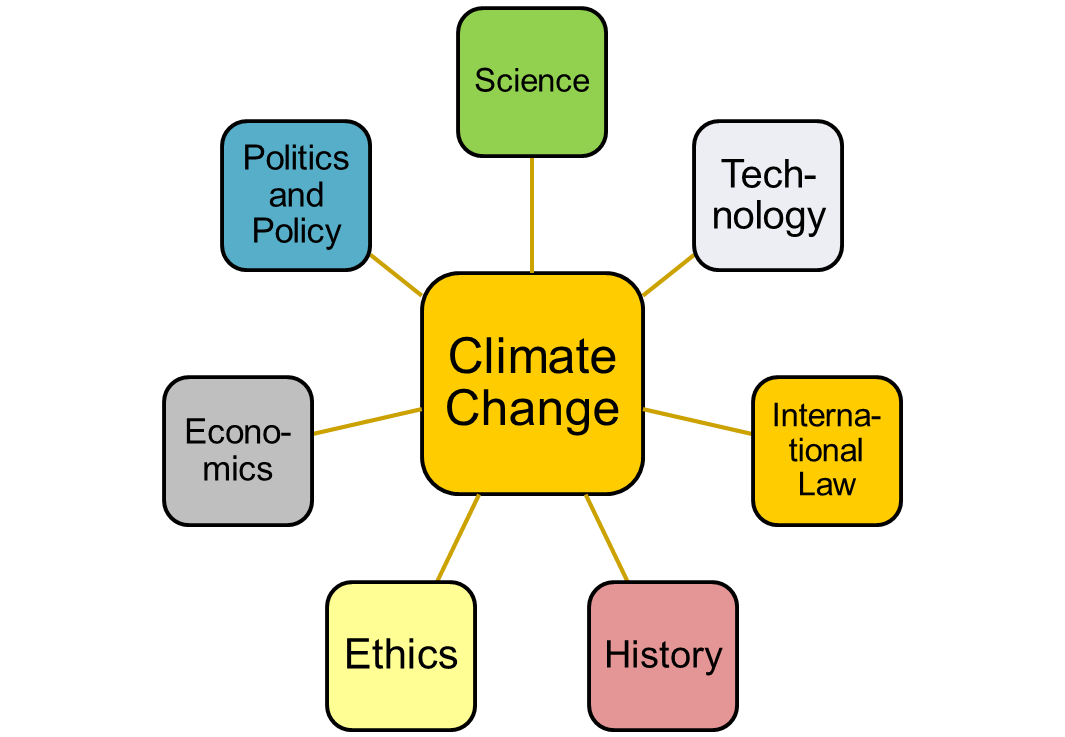
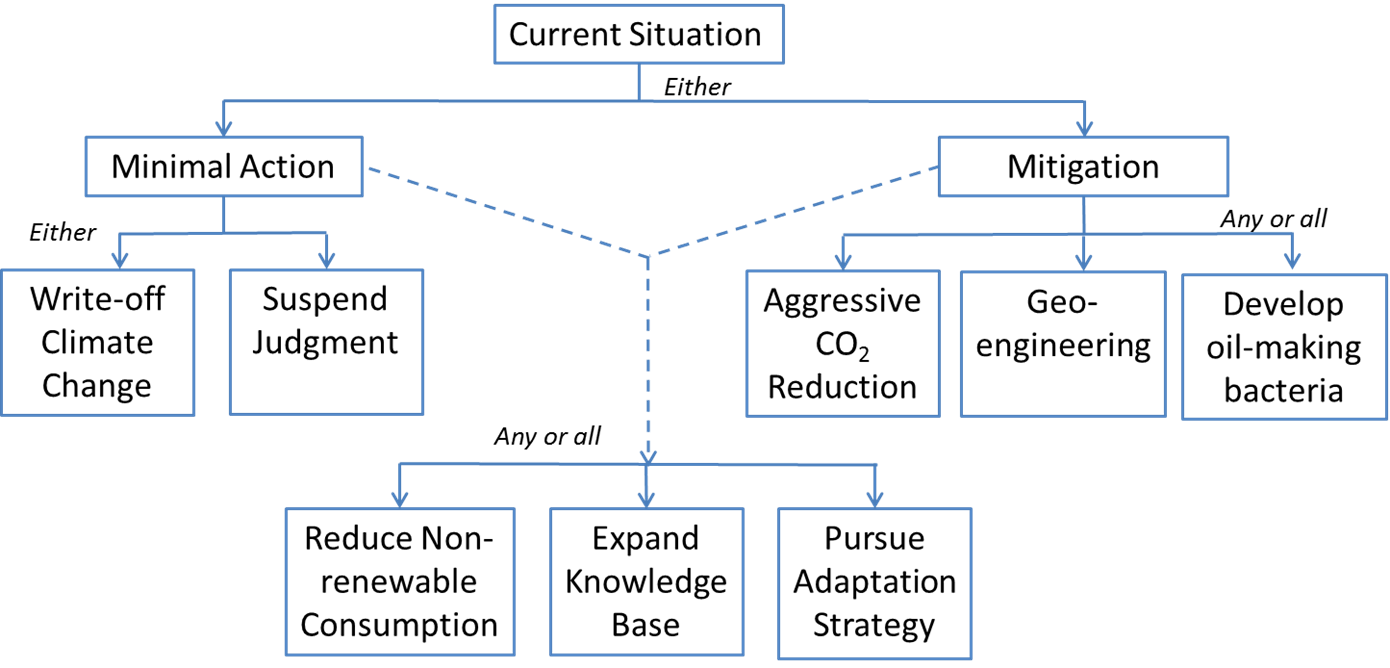
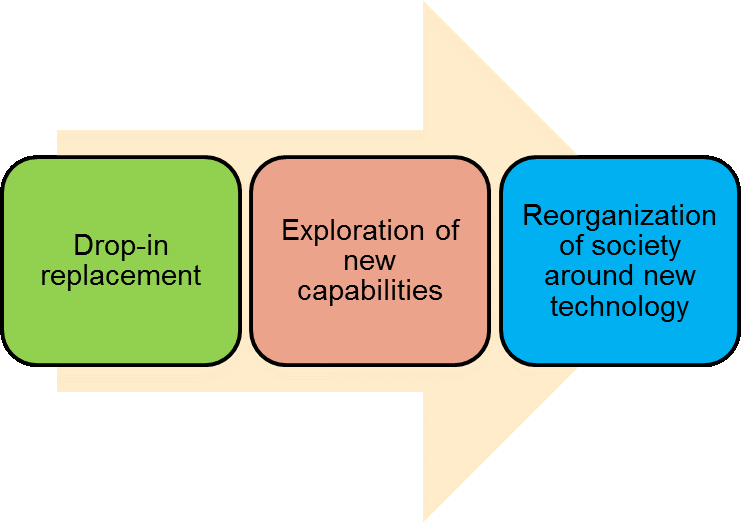
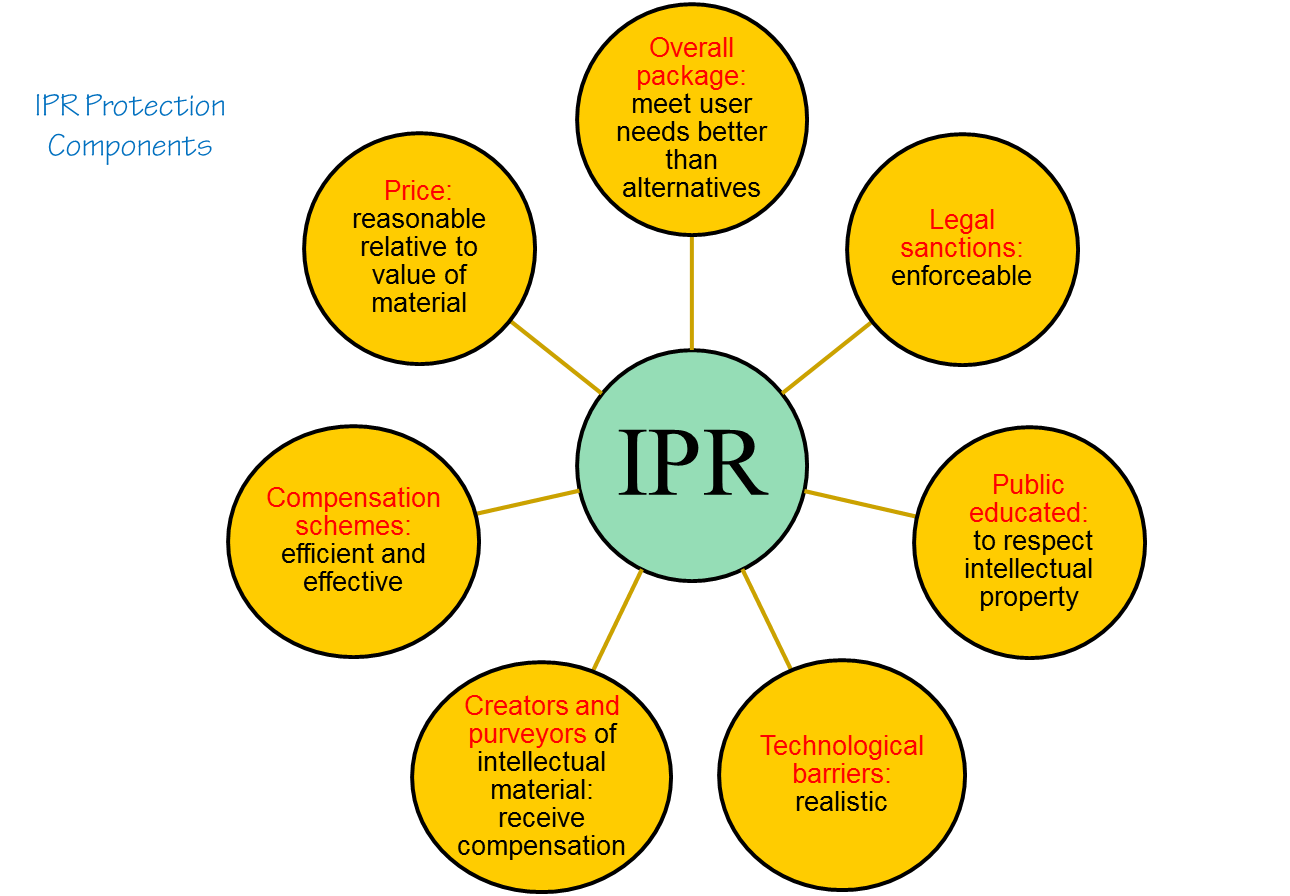
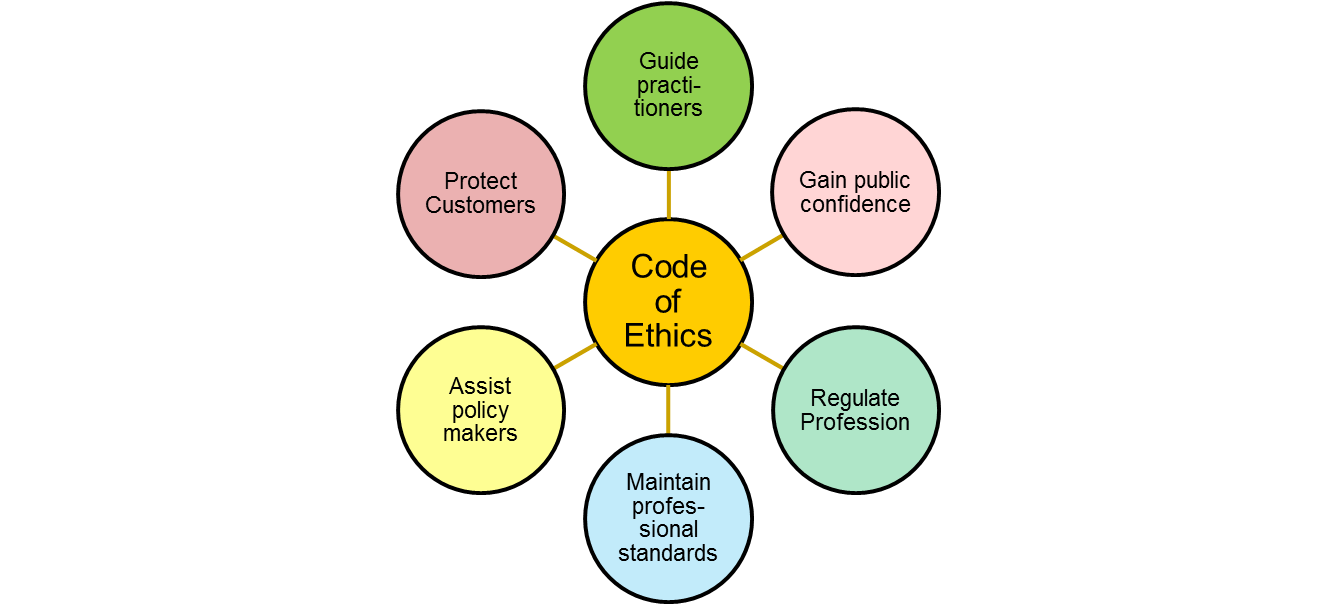
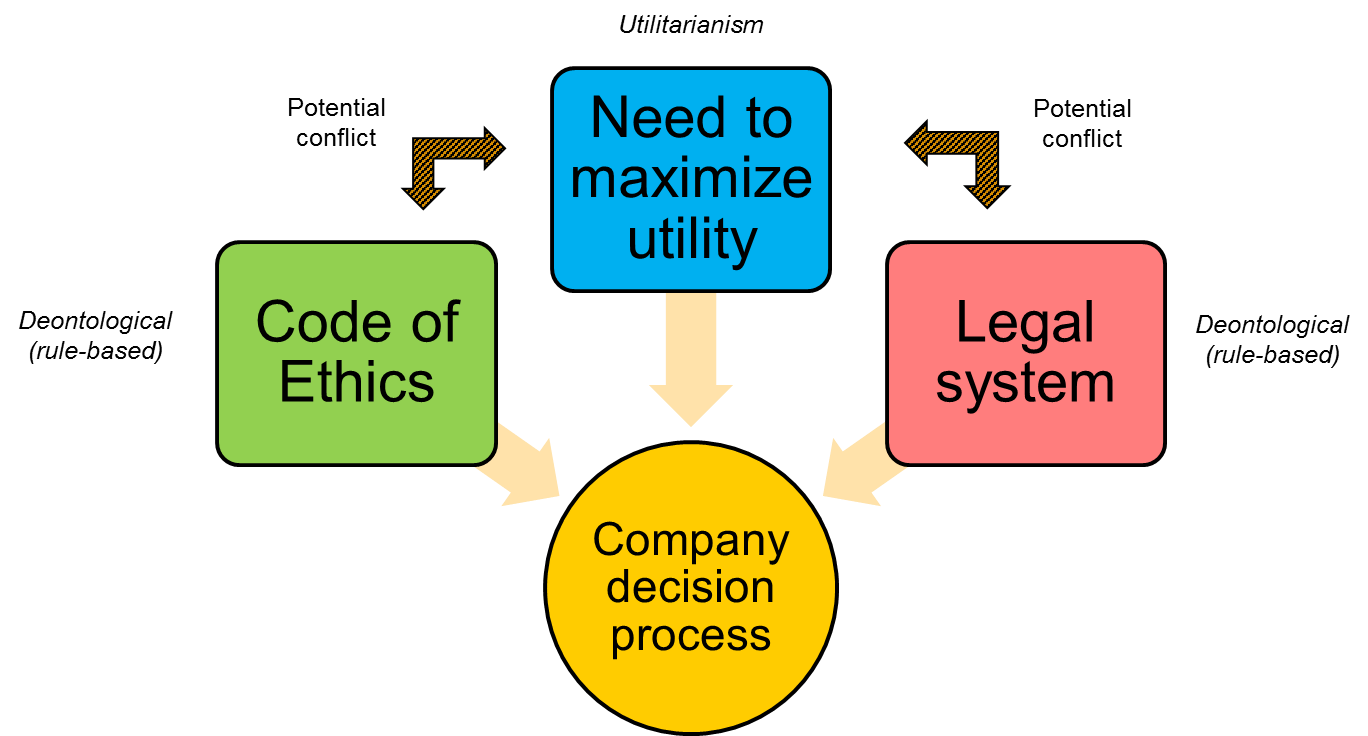
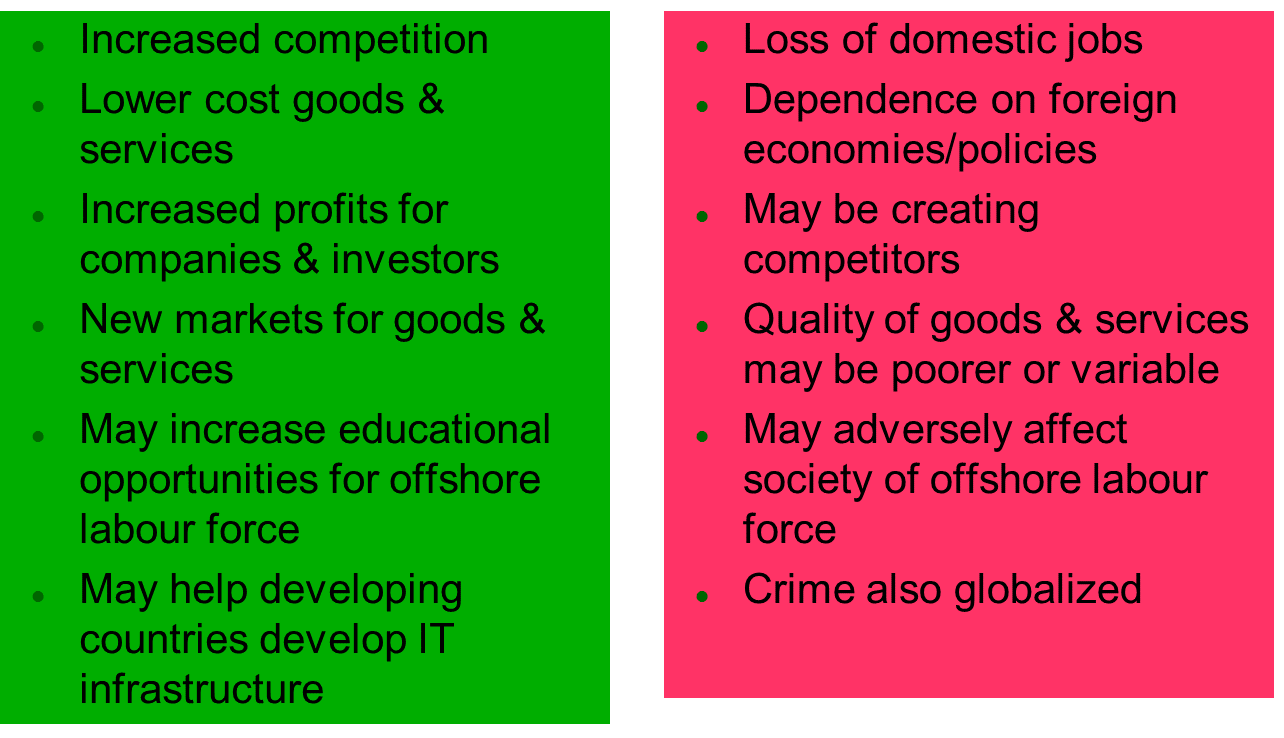
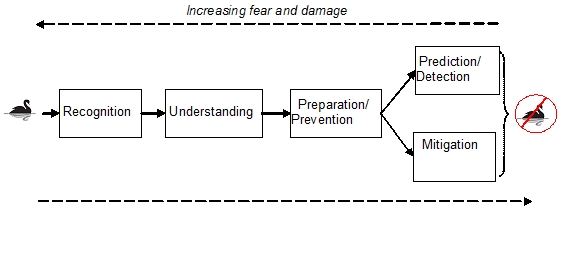
Sorry, comments for this entry are closed at this time.